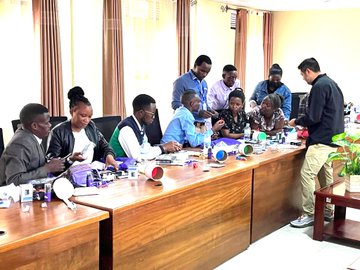How do you prepare for and ace scholarship interviews and tests?
If you are applying for international education scholarships, you know how competitive and challenging the process can be. You need to showcase your academic achievements, personal goals, and cultural fit in your application, but that’s not enough. You also need to prepare for and ace the scholarship interviews and tests that will determine your eligibility and suitability for the award. How do you do that? Here are some tips and strategies to help you succeed.
1.Know your scholarship
The first step is to research your scholarship thoroughly and understand its objectives, criteria, and expectations. What is the mission and vision of the scholarship provider? What are the benefits and responsibilities of the scholarship recipients? What are the common themes and questions that they ask in the interviews and tests? Knowing your scholarship will help you tailor your answers and demonstrate your alignment with their values and goals.
2.Practice your skills
The second step is to practice your skills and improve your performance in the interviews and tests. Depending on the scholarship, you may have to take standardized tests, language tests, aptitude tests, or subject-specific tests. You should familiarize yourself with the format, content, and scoring of these tests and take mock tests or online courses to prepare. For the interviews, you should practice your communication, presentation, and interpersonal skills and rehearse your answers to common and specific questions. You can also seek feedback from mentors, teachers, or peers who have experience with similar scholarships.
3.Be confident and authentic
The third step is to be confident and authentic in your interviews and tests. Confidence comes from preparation, so make sure you have done your homework and reviewed your application materials before the interview or test. Authenticity comes from being yourself, so don’t try to impress the interviewers or test-takers with false or exaggerated claims or opinions. Instead, focus on your strengths, achievements, motivations, and aspirations and show your personality and passion for the scholarship and the international education opportunity.
4.Show your interest and enthusiasm
The fourth step is to show your interest and enthusiasm for the scholarship and the international education opportunity. You should express your gratitude and appreciation for being considered for the award and convey your excitement and curiosity for learning and exploring a new culture and environment. You should also ask relevant and thoughtful questions about the scholarship program, the host institution, or the destination country and show your willingness and readiness to adapt and contribute to the international education community.
5.Follow up and thank
The fifth step is to follow up and thank the scholarship provider after the interviews and tests. You should send a polite and professional email or letter to the interviewer or test administrator, thanking them for their time and attention and reiterating your interest and suitability for the scholarship. You should also mention any specific points or topics that you discussed or learned during the interview or test and express your eagerness to hear from them again. This will show your respect and courtesy and leave a positive impression on the scholarship provider.
6.Be patient and optimistic
The sixth step is to be patient and optimistic while waiting for the results of the interviews and tests. You should understand that the scholarship selection process can take time and involve multiple rounds and stages. You should also acknowledge that there may be many qualified and deserving candidates for the same scholarship and that the final decision may depend on factors beyond your control. You should not lose hope or confidence if you don’t hear back immediately or if you face rejection or waitlist. You should instead celebrate your efforts and achievements and explore other options or opportunities for international education.

